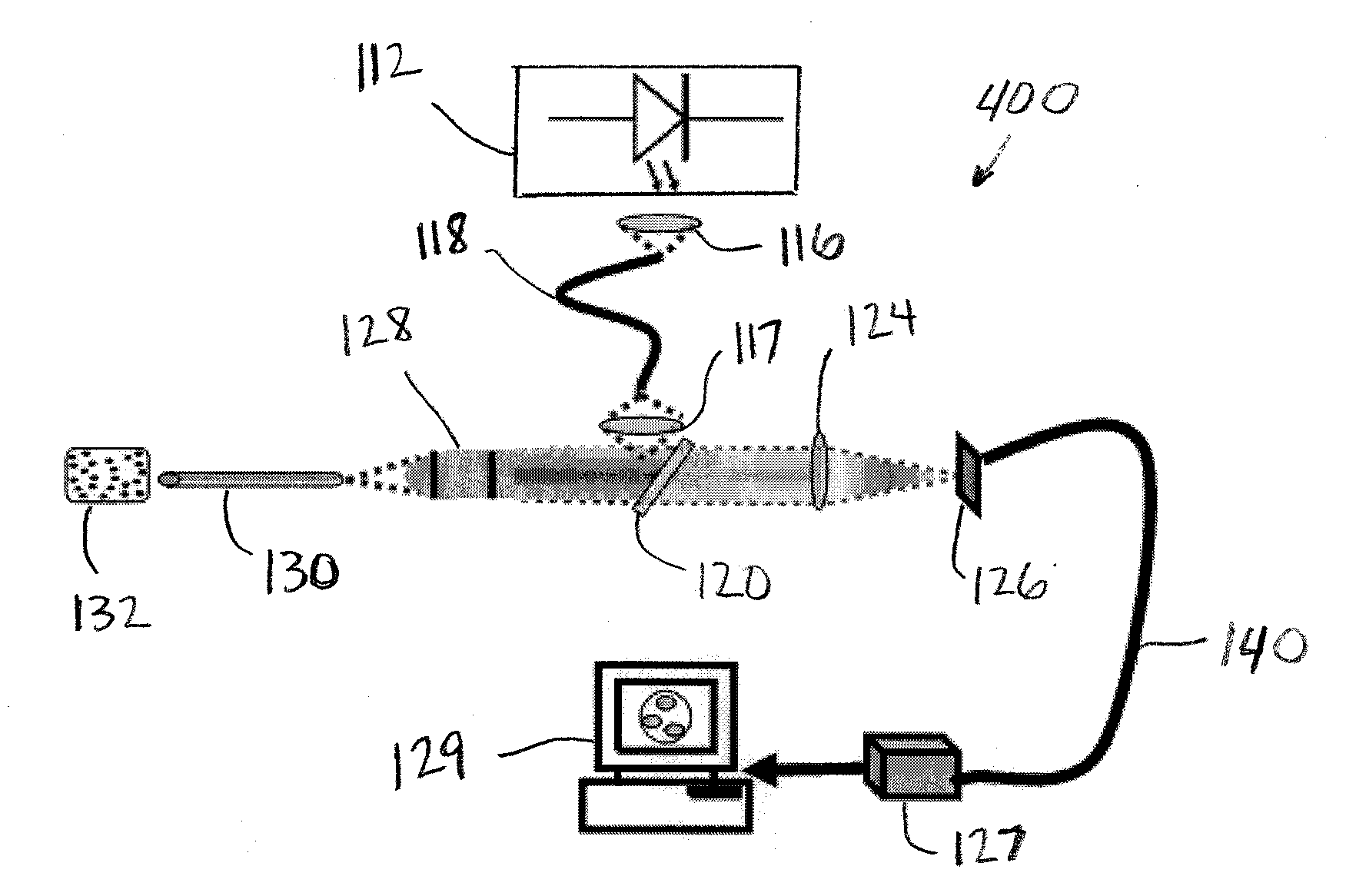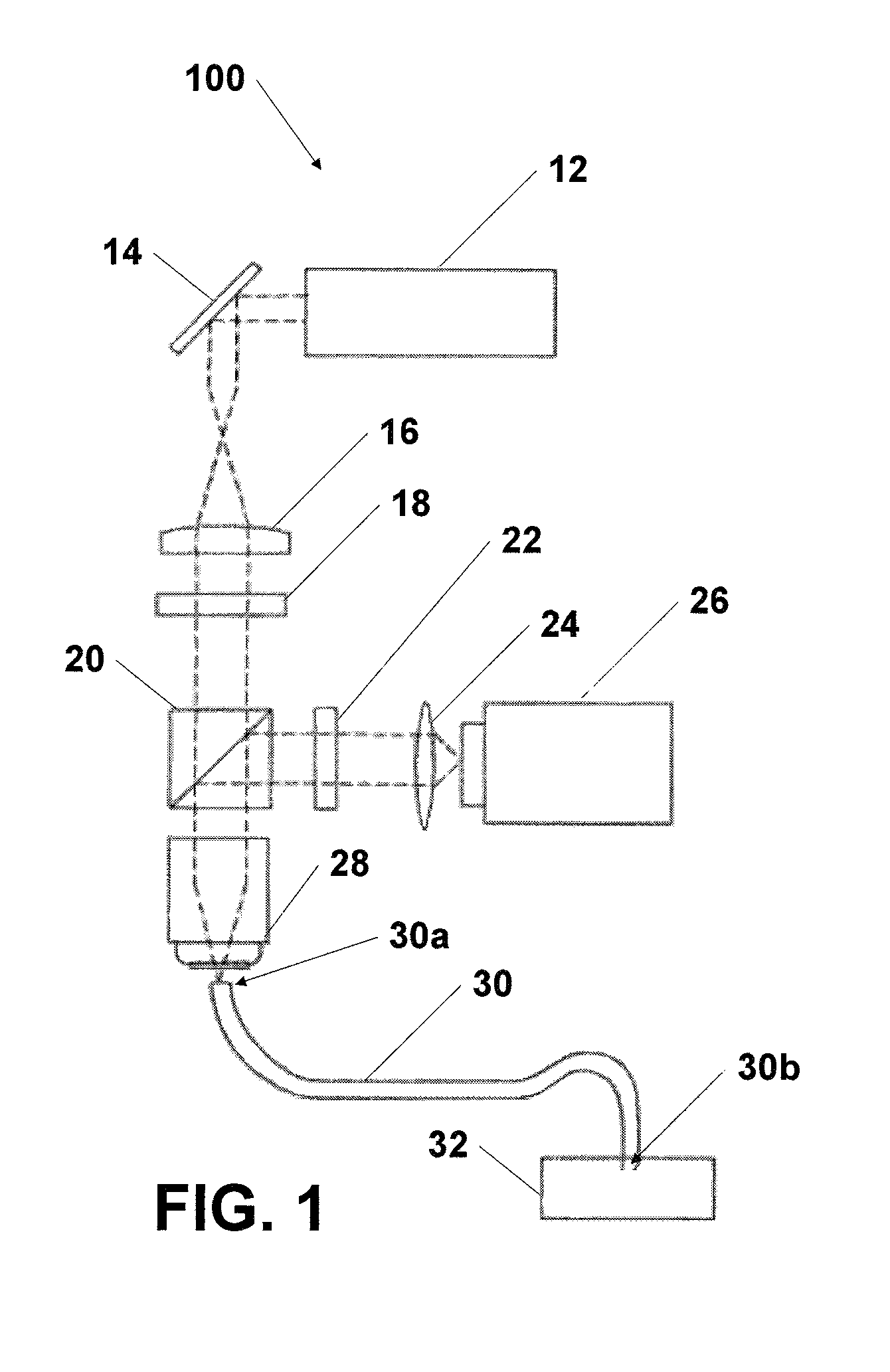Needle biobsy imaging method
a biopsy and needle technology, applied in the field of needle biopsy imaging method and endoscope, can solve the problems of high blood flow to fast-growing tumors, irregular and hyperchromic nuclei, and high oxygen and nutrient demands, so as to reduce specimen variability and reduce the cost of experimentation
- Summary
- Abstract
- Description
- Claims
- Application Information
AI Technical Summary
Benefits of technology
Problems solved by technology
Method used
Image
Examples
examples
[0087]The following examples are included to demonstrate aspects of specific experiments related to this disclosure. FIGS. 7-12 present data associated with embodiments of this disclosure. Subject matter presented as an example may be encompassed by the present claims or added to the claims to define protected subject matter.
[0088]FIG. 7 shows quantum dot (Qdot 655 nm) labeled cancer cells with broadband excitation and long pass filter at 620 nm, imaged with a needle biopsy system as described herein.
[0089]FIG. 8 shows 15 micron diameter fluorescent polystyrene spheres (produced by Invitrogen) in a 10% gelatin phantom. This image was acquired with a needle biopsy system as described here comprising a 455 nm peak emission LED (produced by Lumileds) and a 500 nm long pass filter (produced by Thorlabs).
[0090]FIG. 9 shows images of SK-BR-3 (a breast cancer cell line, from American Type Culture Collection)breast cancer cells labeled with anti-Her-2 antibody (Neomarkers) and 585 nm emissi...
PUM
 Login to View More
Login to View More Abstract
Description
Claims
Application Information
 Login to View More
Login to View More - R&D
- Intellectual Property
- Life Sciences
- Materials
- Tech Scout
- Unparalleled Data Quality
- Higher Quality Content
- 60% Fewer Hallucinations
Browse by: Latest US Patents, China's latest patents, Technical Efficacy Thesaurus, Application Domain, Technology Topic, Popular Technical Reports.
© 2025 PatSnap. All rights reserved.Legal|Privacy policy|Modern Slavery Act Transparency Statement|Sitemap|About US| Contact US: help@patsnap.com



